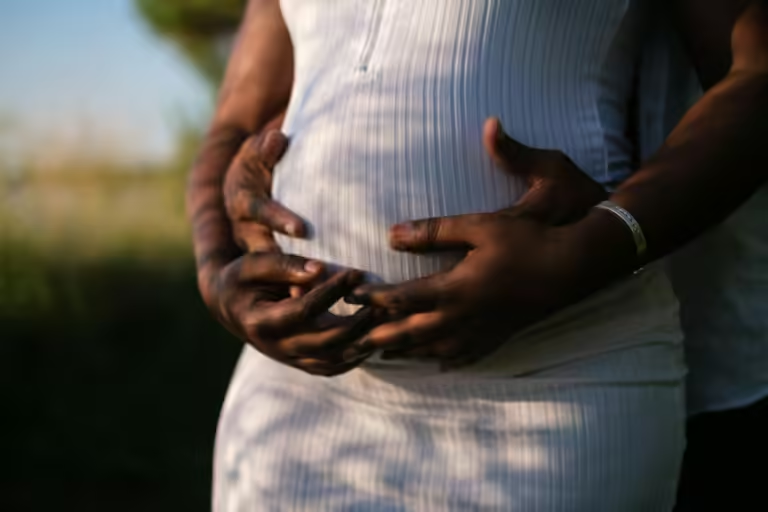New research published in the journal Scientific Reports reveals exciting findings about how babies perceive their surroundings, specifically their understanding of their own body and its interaction with the world. This groundbreaking study, conducted by Giulia Orioli, Irene Parisi, José L. van Velzen, and Andrew J. Bremner, challenges our understanding of how early the brain develops a sense of self.
Imagine being a newborn baby: a world of sights, sounds, and sensations bombards you, yet you are just beginning to make sense of it all. This new research sheds light on how infants, as young as four months old, are already capable of complex multisensory processing that helps them understand where their bodies are in space and how those bodies interact with objects around them.
The study focused on the interplay between vision and touch, specifically how the direction of movement of a visual object influences how infants process a subsequent touch on their hands. Using a clever setup, researchers presented four-month-old and eight-month-old infants with a visual ball that either approached or receded from their hands. The infants were not looking directly at the ball, but rather focused on an attention-getting toy at the top of the screen. After the ball disappeared, the infants received a tactile stimulus on their hands.
The researchers measured the infants’ brain activity using electroencephalography (EEG), a technique that allows them to record the electrical activity of the brain. Their findings revealed that four-month-old infants had a stronger somatosensory response, as measured by their EEG, when the tactile stimulus followed a visual object that had approached their body. This suggests that the infants were processing the tactile sensation differently depending on the prior visual cue.
The eight-month-old infants showed a different pattern of brain activity. While the younger eight-month-olds also exhibited enhanced somatosensory responses following approaching visual motion, the older eight-month-olds showed the opposite effect. Their brains responded more strongly to the tactile stimulus when it followed a receding visual object. This suggests that as infants grow, their brains continue to develop and become more sophisticated in how they interpret visual and tactile information.
Why is this important? Understanding how infants perceive their surroundings is crucial for understanding their development and learning. This research indicates that even before they are able to reach for objects or interact with their environment in a complex way, infants have a remarkable ability to coordinate visual and tactile information, contributing to their developing sense of self.
Several possible explanations for the observed patterns in infants’ brain activity exist:
- Visual-tactile predictive processing: It’s possible that infants are predicting the tactile stimulus based on the prior visual motion. The approaching ball might lead to an expectation of touch, resulting in a stronger response.
- Visual-tactile crossmodal attention: Another possibility is that the visual object draws attention to the body, making the infant more sensitive to the subsequent tactile stimulation.
- Visual cuing of motor preparation: Infants might be unconsciously preparing to move their hands in response to the approaching ball, leading to a stronger somatosensory response.
- Visual-tactile crossmodal binding: The visual and tactile events might be perceived as occurring simultaneously, even though they are presented in different places and times.
Further research is needed to clarify which of these explanations best accounts for the observed brain activity patterns. It is likely that multiple processes are involved, and their relative contribution may change over development.
This study provides valuable insights into the complex world of early brain development. It reveals that infants, even very young ones, are not passive receivers of sensory information but are actively interpreting and integrating that information in ways that are vital for their developing understanding of their bodies and their place in the world. This research highlights the amazing capabilities of the infant brain and the importance of providing rich sensory experiences that support healthy brain development.
For parents and caregivers, this research suggests that even before a baby starts reaching for objects or making complex movements, their brain is already busy building a sense of self. Engaging babies with a variety of sensory experiences, from playing with toys that move to gentle touch and exploration, will contribute to this critical developmental process.
This exciting research also offers a glimpse into the fascinating neural processes underlying self-awareness. The findings raise important questions about how the brain learns to represent the body in space and how these representations evolve over time. This knowledge will lead to a deeper understanding of the neural underpinnings of perception, learning, and ultimately, our experience of ourselves in the world.









[…] and by 14 weeks, they’re already able to detecting totally different tastes. And their sense of odor isn’t any slouch both. Their nasal orifices open round 24 weeks, permitting them to […]
[…] second week of being pregnant, these delicate buildings are already useful, enabling the fetus to sense their mom’s actions and expertise their first sensations of gravity. This early publicity to […]
[…] child infants show a exceptional, albeit rudimentary, skill to understand faces, demonstrating a desire for face-like patterns and monitoring shifting faces with their gaze. […]